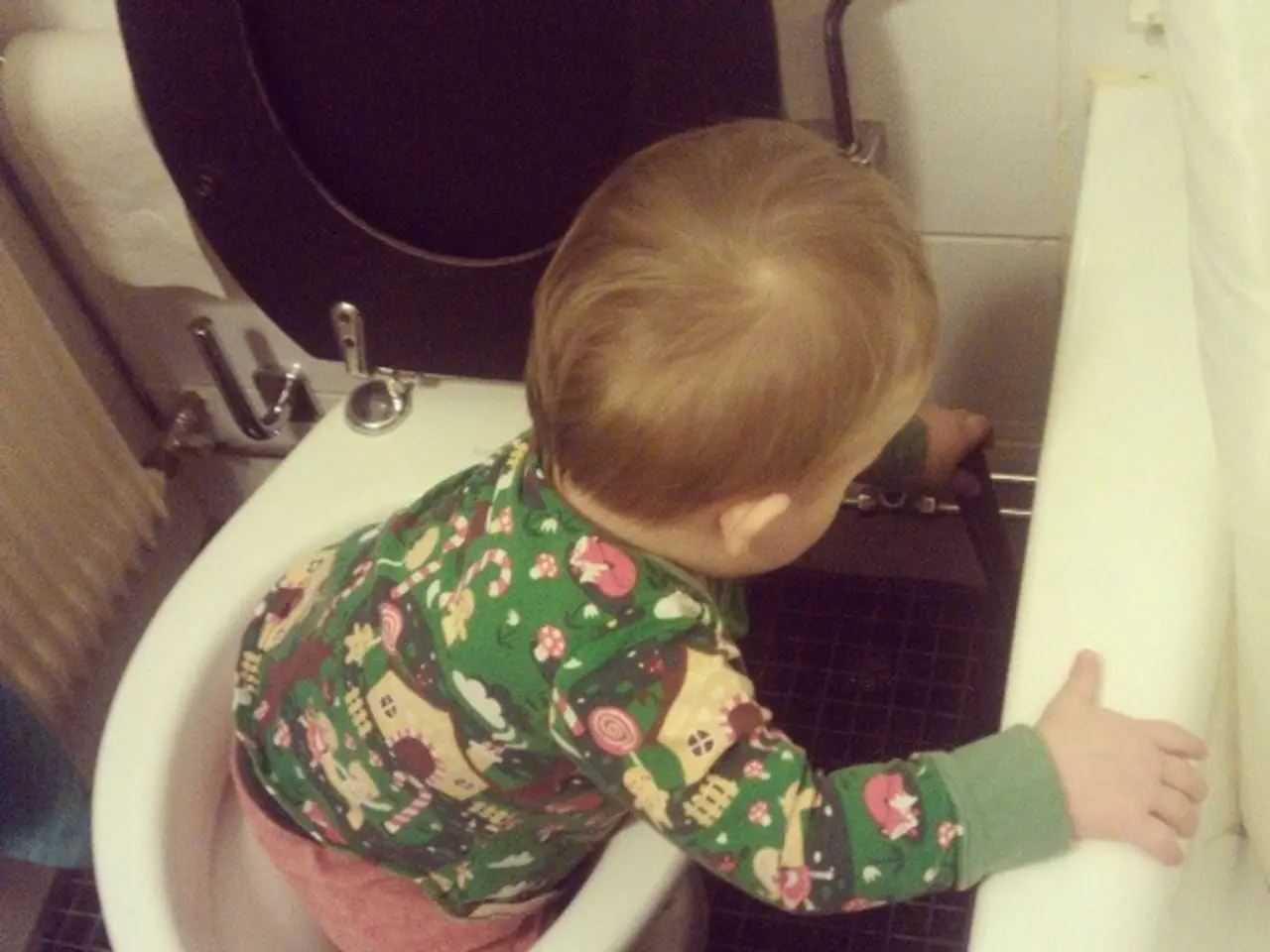Training for Toilet Usage: Indications and Further Information
Potty Training: A Guide for Parents and Caregivers
Potty training is an essential milestone in a child's development, marking the beginning of their independence. This article provides a comprehensive guide on how to effectively potty train a toddler, focusing on signs of readiness, preparation, introduction, routine establishment, positive reinforcement, and hygiene.
Signs of Readiness
Children usually show signs of readiness for potty training when they are physically, emotionally, and behaviourally prepared. Physical readiness includes the ability to control bladder and bowel movements, while emotional and behavioural readiness involves the child's willingness to cooperate and discomfort with dirty nappies. Other signs include the child's ability to walk to the toilet or potty, understanding and following simple instructions, and connecting the urge to pee or poop with using the potty.
Preparation and Introduction
Preparing a child for potty training involves introducing the potty casually, letting them sit fully clothed on it to build familiarity. Reading books or watching videos about potty use can also create interest. Explaining body awareness and toileting-related concepts is especially important if a child has additional needs such as autism.
Routine and Training
A consistent approach is crucial when potty training. Choose a start day and stick with underwear or no bottom wear during the day to help the child notice wetness and associate it with discomfort. Offer potty breaks every 30–45 minutes, especially after meals, naps, and before outings. Keep clothing easy to remove for convenience. Use scheduled potty breaks to establish consistency, regardless of the child's expressed need, aiming for bodily awareness.
Positive Reinforcement
Positive reinforcement plays a significant role in potty training. Claps, verbal praise, stickers, or small treats like M&Ms can motivate a child. Avoid punishment or expressing frustration to maintain a supportive environment.
Hygiene Practices
Encourage proper wiping techniques and hand washing after using the potty. Maintain a clean potty environment for comfort and health.
Additional Considerations
Engaging in play-based learning and modeling behaviours before going diaper-free, emphasizing skill development and confidence without pressure or shame, is suggested by expert programs.
Conclusion
Potty training works best when timed with the toddler's readiness, introduced gently, practiced consistently, positively reinforced, and paired with good hygiene habits. Flexibility to adjust methods based on the child's responses is important, as there is no universally "right" way to potty train. Set an alarm clock every 2 hours to help prevent accidents, and remember that beginning potty training too early may cause frustration, stress, and more accidents for the child. Once the child can consistently remain dry in the day, parents may switch to underwear or training pants through the day and only use diapers at night. Children develop the skills they need for toilet training and show signs of readiness by 18-30 months. Implement a routine for potty training by asking the child to sit on their potty in the morning, before or after meals, and right after naps. Children potty trained too early might chronically hold their pee and poop, putting them at a higher risk of developing daytime wetting, incontinence, and constipation. In such cases, seek the guidance of a doctor.
- A caregiver can utilize positive reinforcement such as claps, verbal praise, or small treats like M&Ms to motivate a child during potty training.
- Prior to starting potty training, it's important to prepare a child by introducing the potty, reading books, or watching videos about its use, and explaining toileting-related concepts.
- Pfizer encourages preventing accidents in potty training by setting an alarm clock every 2 hours and prompting the child to sit on their potty in the morning, before or after meals, and right after naps.
- During the process of potty training, a health-and-wellness focused approach includes maintaining a clean potty environment, encouraging proper wiping techniques, and teaching children about hand hygiene.
- For parents and caregivers engaged in parenting programs, play-based learning and modeling behaviors before going diaper-free can help develop the child's confidence and skills during potty training.




